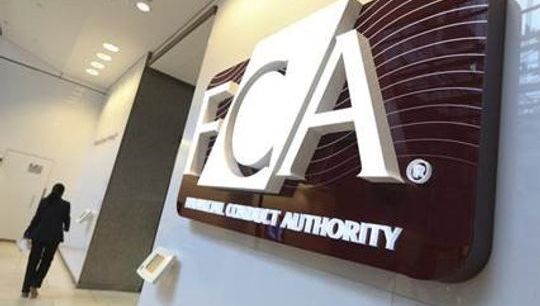ESMA publishes fourth package of MiFIR Level 2 consultations
Published: 11 October 2024
On 3 October 2024, the European Securities and Markets Authority (ESMA) published a fourth consultation package on the ‘Level 2’ measures mandated by the European Commission under the Regulation amending MiFIR (MiFIR Review).
The final texts of the MiFIR Review and the Directive amending MiFID II (MiFID II Review) entered into force on 28 March 2024, with the MiFIR Review binding in its entirety and directly applicable in all Member States and a 28 September 2025 transposition deadline for the MiFID II amendments.
ESMA is consulting on the following two regulatory technical standards (RTS).
1. *Amended* RTS 22 on Transaction Reporting
Background
- The MiFIR Review amends Article 26 of MiFIR with changes relating to the scope of transactions to be reported with regards to transactions in derivatives. New transactions in scope of MiFIR reporting are transactions in certain OTC derivatives referred to in Article 8a(2), that is OTC derivatives denominated in EUR, Japanese yen, USD or GBP which (i) are subject to the clearing obligation, are centrally cleared , and, in case of IRS have a contractually agreed tenor of 1, 2, 3, 5, 7, 10, 12, 15, 20, 25 or 30 years; (ii) are single-name credit default swaps that reference a global systemically important bank and that are centrally cleared; or (iii) are credit default swaps that reference an index comprising global systemically important banks and that are centrally cleared. The revised Article 26(2) sets out that: (i) transactions in OTC derivatives other than those referred to in Article 8a(2)3 must be reported only when executed on a trading venue; and (ii) the transactions in OTC derivatives referred to in Article 8a(2) must be reported irrespective of whether such transactions are carried out on the trading venue.
- ESMA is mandated to amend RTS 22 to specify (i) the rules for determining the relevant national competent authority (NCA) of the most relevant market in terms of liquidity (together, “RCA”); (ii) new fields to report transaction effective date and the entity subject to the reporting obligation; (iii) proposed new identifiers and changes to existing ones to link specific transactions and identify aggregated orders; (iv) amendments to define the relevant categories of indices; (iv) the ‘date by which the transactions are to be reported’; and (v) amendments to the fields to align MiFIR transaction reporting requirements with the EMIR and SFTR reporting frameworks and international standards.
- ESMA proposes additional enhancements related to: (i) identification of transactions in distributed ledger technology financial instruments that fall under the scope of Article 26; (ii) extension of the scope of cases considered as transmission of an order agreement under Article 4 of RTS 22 and extension to specific cases of portfolio and fund managers under Article 7; (iii) amendments linked to changes introduced according to the revised Article 27 and reflected in ESMA’s Level 2 consultation paper on RTS 23 on reference data; and (iv) changes to the fields to improve the quality and effectiveness of the reporting.
Key proposals
Most relevant market in terms of liquidity
- Introduce the following RCA determination rules for derivative contracts falling under Article 8a(2) of MiFIR: (i) where a CDS references a specific debt obligation admitted to trading or traded on a trading venue, the RCA should continue to be determined in accordance with current rules, i.e. it should be the authority of the most relevant market in terms of liquidity for that underlying security; (ii) where a CDS references a specific reference entity based in the EU, the RCA should be the authority in the Member State in which that reference entity has its registered office; (iii) where a CDS references a specific index, the RCA should be determined in accordance with the proposed rules for index derivatives, i.e. it should be the authority supervising the benchmark administrator; (iv) for the remaining CDS which are traded on venue and IRD which are traded on venue, the RCA should be determined in accordance with the Article 16(6), i.e. it should be the authority of the venue of first trading or first admission to trading; and (v) for the remaining CDS and IRD which are not traded on venue, the concept of RCA would not be applicable - the relevant transactions would be shared only with the NCAs responsible for the supervision of the transmitting investment firms and of the branches that have been part to the transaction, as applicable.
- Amend the RCA determination rules for index derivatives and depository receipts as follows: (i) the RCA for derivatives on indexes should be the authority supervising the benchmark administrator - only in the cases where the index is not in the scope of BMR and therefore there is no supervisory authority for that index under MAR, the RCA should be the NCA of the venue where the derivatives was first admitted to trading; and (ii) the RCA for depositary receipts should be the authority of the most relevant market for the direct underlying share - where the depositary receipt does not have a share as the direct underlying, the RCA should be determined in accordance with the applicable rules, notably: (i) if the depositary receipt has as underlying another depositary receipt, then Article 16(5)(a) applies (relevant market of the underlying depositary receipt); and (ii) if the underlying is a derivative, then Article 16(5)(e) applies (venue of the admission to trading or first trading of the underlying derivative contract).
New fields
- Add new fields for (i) identifying the date when the obligation under the transaction in financial instruments becomes effective; (ii) the “entity subject to the reporting obligation”; (iii) (“INTC identifier”) to capture in detail the aggregate orders and assign responsibility to the executing investment firm for generating the INTC identifier consistently; and (iv) a new and unique code (“chain identifier”) to link to the same sequence of report chains resulting in the execution of a transaction and place the obligation to pass the code down the chain with the firm executing the transaction, with the firm transmitting the order required to use it consistently in the transaction reports.
- For debt instruments: set an effective date as when the transaction will be settled. For derivatives contracts: set an effective date as when the obligation under the contract becomes effective, which may be in the future (forward starting date). Where the effective date is not specified as part of the terms of the contract on financial instruments, require that the parties report in this field the date of execution of the transaction (i.e. current field 28 “trading date time” of RTS 22). ESMA seeks views on whether the concept of effective date applies also to transactions in shares and if the intended settlement date should be considered as the effective date.
- Extend the reporting of the Trading Venue Transaction Identification code to transactions executed in non-EEA venues to improve the process of matching the different transactions sides that are reported. ESMA would produce ‘Level 3’ guidance to identify a methodology for generating such a code. ESMA proposes identifying the ‘market facing’ firm acting as the seller as the primary entity responsible for the creation of the code of off–venue transactions and for disseminating it to the other ‘market facing’ firm acting as the buyer.
Relevant categories of indices
- Define the relevant categories of indices by referring to “benchmarks” as defined in Article 3(1)(3) of the Benchmark Regulation.
The date by which transactions are to be reported
- As proposed in ESMA’s Level 2 consultation paper on RTS 23 on reference data, set the date by which transactions are to be reported equal to the date of application of the revised RTS 22 and align the date with the other interdependent requirements, i.e. reference data and transparency requirements.
Alignment with EMIR, SFTR and international standards
- Amend certain field names (e.g., “action type”, “report submitting entity”) and definitions of field names (e.g., “price currency” and “notional currency 1”); and split the field “underlying index name” into two: “Indicator of the underlying index” and “name of the underlying index”.
- Align reporting of information related to price and include a new article to set out the rules on determination of the direction under MiFIR and EMIR for different types of instruments.
- Align the MiFIR concept of complex trades with EMIR.
- Add an additional field “package transaction price” to align MiFIR reporting with the requirements set out under EMIR REFIT and in the CDE Technical Guidance.
Other enhancements
- Add two new fields to allow for the reporting of the ISO 24165 Digital Token Identifier for DLT financial instruments and underlyings: “financial instrument code” and “underlying identification code”.
- Amend the transmission of an order conditions set out in Article 4 of RTS 22 to extend the scope to cases when the investment firm is acting on its own account (“DEAL”).
- Amend Article 7(2), which implies that in the instances where a portfolio or fund manager takes an investment decision for a client the portfolio or fund manager should be identified in field 12 as “external decision maker”, to include the specific cases of portfolio and fund managers and identify properly when a firm is acting as external decision maker of a client or as a buyer/seller in the transaction.
- Update the “instrument details” section in the Annex to align with the pending revisions to RTS 23 and the European Commission’s delegated act specifying the identifying reference data to be used for OTC derivatives.
- Add a new field to Table 2 of Annex I to report the categorisation of the client pursuant to the Article 24 of MiFID and eligible counterparties pursuant Article 30 of MIFID II.
- Remove field 63 “short selling indicator” from Table 2 of Annex I as this data element is captured in the existing field of RTS 22 Table 2 of Annex I and therefore can be removed from the reporting requirements.
- Amend Table 2 of Annex I and II to: (i) amend field 35 “net amount” to reflect that the information is required for all type of instruments and when the information is not available then it should be populated as “not applicable”; (ii) amend fields 7 “seller identification code" and 16 “buyer identification code” to specify the identification code when it is not possible to retrieve the LEI or the natural person ID and also clarify in the description of both fields that “INTC” shall only be used with aggregate orders from multiple clients; (iii) amend the field description of field 47 “underlying ISIN” to specify clearly that the reporting should be performed at level of each index’s ISIN when the underlying is a basket of indices which constituents are financial instruments traded on a trade venue; and (iv) significantly simplify field 62, including detailed waiver categories, to collect information only on the reference price waiver.
List of exempted transactions
- Amend the list of exempted transactions under Article 2(5) of RTS 22 to: (i) include the disposal or selling of financial instruments ordered by a court procedure or decided by insolvency administrator in the context of a liquidation/ bankruptcy /insolvency procedure; (ii) include transactions in emission allowances auctioned on auction platforms; and (iii) narrow the scope of novations excluded and listed in Article 2(5)(e), specifying that novation should not be reported under some circumstances – namely, when they are related to a clearing arrangement.
Format for reporting
- Change the format mandated in Article 1 of RTS 22 from XML to JSON.
Consultation deadline: 3 January 2025
Deadline for ESMA to deliver final technical standards: 29 September 2025. However, ESMA states that it will submit the final RTS to the European Commission for adoption in Q1 2025.
2. *Amended* RTS 24 on the reporting of transactions to competent authorities
Background
- Article 25 of MiFIR requires investment firms and trading venues to keep at the disposal of NCAs records on orders for a period of five years. RTS 24 specifies the details of the order book trading records maintained by trading venues.
- The MiFIR Review did not introduce substantial amendments to the provisions set in Article 25. ESMA is mandated to amend RTS 24 to specify the details and formats of the relevant order data that trading venue operators are required to maintain pursuant to Article 25(2).
Key proposals
- Adopt JSON as standard and format of order book data keeping and transmission.
- Update the field list in the Annex of RTS 24 to align with the proposed RTS 22 fields.
- Add a new field to capture the date and timestamp when a transaction is cancelled after validation from both parties.
- Amend the fields in Table 2 of the Annex of RTS 24 to: (i) add a new field to capture the ex-post cancellation of a transaction (not of an order) that should have taken place but not executed/settled following the consent of both involved members; (ii) amend field 5 "execution within firm” to add a new value as possible entry “NORE” to identify that the execution decision has not been taken by the market participant but by a third party (e.g., a client of the market participant) and to take into account the same amendment proposed for RTS 22 to identify that the execution decision has been taken by a third party; and (iii) amend field 3 “client identification code” to add new value to align with fields 7 and 16 of RTS 22 for indicating an aggregate client account (INTC) instead of AGG.
Consultation deadline: 3 January 2025
Deadline for ESMA to deliver final technical standards: No stated deadline the MiFIR Review text. ESMA states that it will submit the final RTS to the European Commission for adoption in Q1 2025.
If you have any questions, please contact Aniqah Rao.







